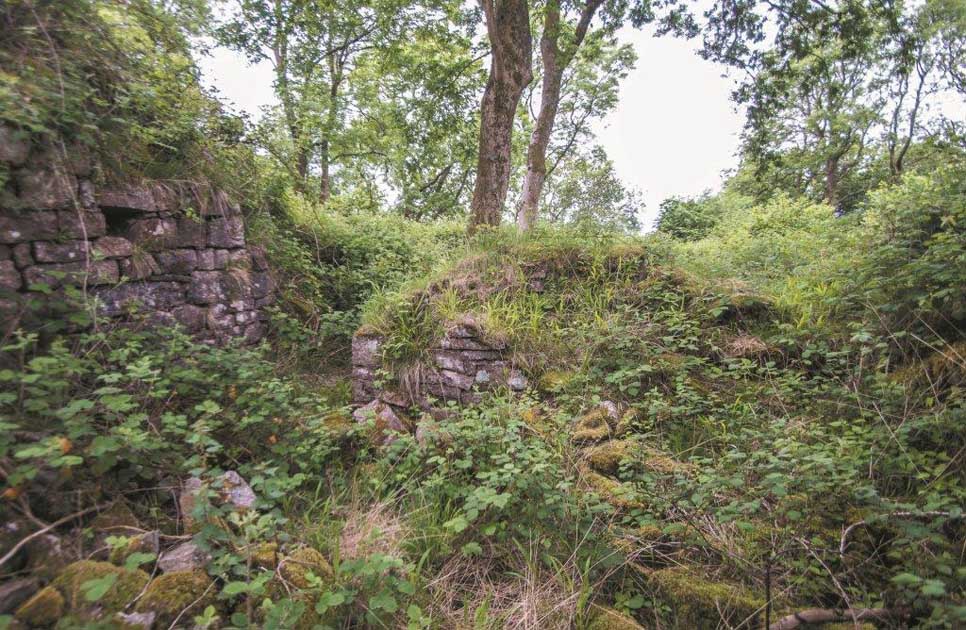Morgraig Castle

Morgraig Castle Details
Morgraig Castle, intriguing ruins of C13 castle, either native Welsh or of de Clares
- Closest To: Cardiff, Caerphilly
- Access: Free Public Access
- Grid Reference: ST15998437
Morgraig Castle is a ruined courtyard castle of unusual design sitting on top of a prominent ridge between Cardiff and Caerphilly. It is accessible via a public footpath, but there is no public parking nearby. It is the subject of a fairly hot academic debate as to whether it is a foundation of the native Welsh or the Clare Lords of Glamorgan.
In plan, the walled courtyard is a slightly flattened pentagon, with irregular D-shaped towers at four corners, two each to north and south of the ridgeline, and a rectangular one to the rear (east) on the ridgeline itself. The entry to the courtyard is a gap in the west-facing wall, and the towers to the south are founded on artificial platforms that rise above the ambient slope. The courtyard measures about 40 metres across, and there are traces of a ditch on the north side. The ruins survive to a height of perhaps four metres in places, and the walls are up to 2.5 metres thick; the whole monument is overgrown with vegetation and unmaintained.
The castle dates roughly to the third quarter of the 13th century, at a time when this area was being annexed by Earl Richard de Clare and the representatives of his son Earl Gilbert (II), and when that annexation was being opposed by Llywelyn ap Gruffudd of Gwynedd, seeking to expand his own dominance in the lands of Senghenydd. After the earl established his authority with the castle of Llantrisant in 1245, there was an increase in resistance to his authority, and in 1257, Llywelyn destroyed the earl’s castle at Llangynwyd with the support of Gruffudd ap Rhys, the native lord of upland Senghenydd. It seems unlikely that Earl Richard would have permitted the construction of a castle on the border by Gruffudd unopposed in this context. When Earl Richard died in 1262, the English Crown acted as Gilbert’s protector until he achieved his majority in 1263, and between 1263 and 1265 was the great struggle between king and barons in England – with Earl Gilbert joining the Crown in 1265. By this time Gilbert had the time and the resources to build something considerably more impressive, so the balance of probability would point to Morgraig being a foundation of Earl Richard between 1243 and 1262 or Gruffudd between 1265 and 1266, when he was captured and sent to prison by Earl Gilbert.
The castle is built from Ogmore stone, and although it is possible that an arrangement between native Welsh lord and the lord of Ogmore permitted this, Ogmore was subject to Glamorgan and the Clares. As such, it seems unlikely that either of the earls would have permitted a castle so obviously intended to loom over their boundary to use their stone to do so. Morgraig was also referred to as “Castell Kibor” ie the castle of the commote of Cibwr, the southernmost of the three commotes of Senghenydd. Cibwr was held as part of Glamorgan. Soon after the capture of Gruffudd, Earl Gilbert started building a new castle at Caerphilly – and it seems unlikely that Morgraig was ever completed. Nevertheless, it is a hugely interesting site.
Become a supporter of my work to access a more detailed history